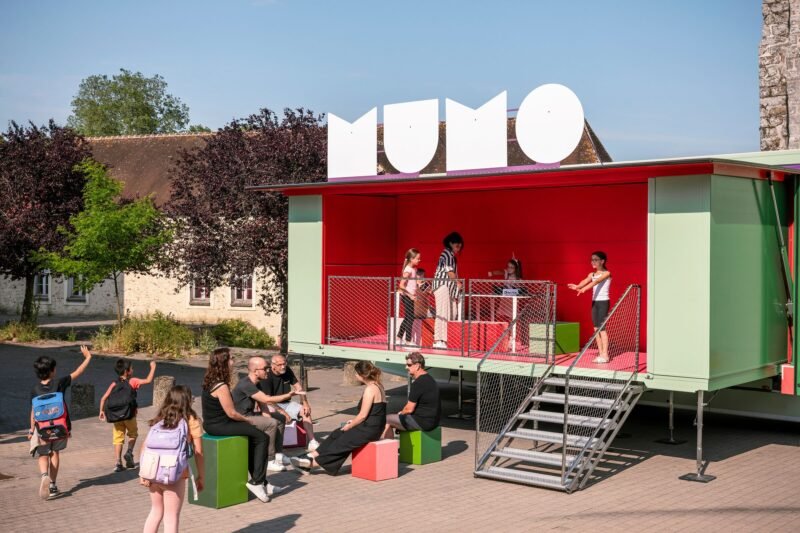Is Amsterdam Turning Into A Museum?
Recently I came across reviews of two apps: the ‘Amsterdam 1850-1940’ app, which contains information and imagery of over 3500 buildings in Amsterdam built in the heyday of Amsterdam history, and the app called ‘History2go’, which literally claims to “change historical city centers into open-air museums”.
Reading the articles and taking a look at the apps in question lead me to rethink the so-called ‘museumification’ of the city of Amsterdam. At first glance, the apps appear to be just another tourist guide to the niceties of Amsterdam — its old and unique architecture. In fact this is what attracts tourists the most, the (historical) looks of the city. As Lonely Planet states on its website:
“WANDER INTO THE PAST — Amsterdam is ripe for rambling, its compact core laced by atmospheric lanes and quarters (…). Wherever you end up, it’s probably by a canal. And a cafe. And a gabled building that looks like a Golden Age painting.”

‘De Gouden Bocht in de Herengracht in Amsterdam vanuit het oosten’, Gerrit Adriaensz. Berckheyde, 1671-1672
But does this mean Amsterdam is turning into a museum? The use of the concept of museumification (or ‘musealization’) is quite ambiguous and not widely theorized, but there seems to be consensus about at least one particular definition if this idea. In this meaning, museumification entails the process of denominating certain buildings or areas as monuments of history (either official or unofficial), which often leads to an arresting development of that specific building/area. They are declared sacred, as it were. This idea of museumification has a strong negative connotation, and is sometimes explained as turning a ‘living’ city into a ‘dead’ city. Or, in some cases, turning a free space for locals into a commodity for tourists.

‘Het stadhuis op de Dam in Amsterdam’, Gerrit Adriaensz. Berckheyde, 1672
A telling example is the recently broadcast documentary ‘Venice’, a city which is empty half of the year and in which locals get asked “What time does Venice close?” as if it were a theme park. One of the more local examples is the appointment by UNESCO of the canal ring of Amsterdam to their world heritage list in 2010. After this a flare of criticism burst out, warning for the consequences of this decision — disneyfication, overpriced housing and shops, a stop on renewal of the area and segregation of the inhabitants of Amsterdam. But I think it is interesting to look at the motivation of UNESCO (but also the municipality or even members of the council) to ‘musealize’ some parts of town. Why is it important to conserve buildings, what do you actually conserve about it and for whom?

Amsterdam’s canal belt
In the writings of UNESCO, but also from our Dutch government, the biggest focus lies on the idea that cultural heritage functions as a testimony of our identity (as human beings, or more specifically as Dutch people). The Dutch State Service for Cultural Heritage states: “Different groups try with the help of heritage to go beyond the volatility of time and fix their ideas and values”. In a policy letter of the minister of Education, Culture and Science, he claims that “these tangible proofs of a rich and divers past deserve to be preserved. They tell us where we come from, as messengers from the past. They keep memories alive and give relief to our image of who we are nowadays. Cultural heritage is a beacon for our identity and its sources are of pride for everyone”.

This all sounds pretty terrific, but the problem here is that this ‘we’ and ‘everyone’ (in other words, ‘our identity’) is never specified. Because whose identity is it really, that is being portrayed by the canal ring? And who is ‘everyone’? Stating that the canal ring is a testimony of the shared past of ‘all of us’, suggests that there is one official history of Amsterdam in which all of its citizens should and could feel ‘at home’. This however is not the case. If you look at the buildings that have been incorporated into this official history, it becomes clear that this history mostly tells the tales of the dominant white (male) population of the Netherlands. By treating this particular history as the only history and keeping its legacy intact it becomes almost impossible to find and create new histories of Amsterdam.


Now let’s look at the apps. Especially the app ‘History2go’ is no different. I must say that the only available tour right now is a tour about Amsterdam in the Golden Age — but I think this is already telling about what the app does. The tour fully reproduces the narratives with which the tourist (but also the citizen) is already familiar, including a short history of Amsterdam completely leaving out the immigration waves since the 1960s and the gay & lesbian scene.

The ‘Amsterdam 1850-1940’ app
‘Amsterdam 1850-1940’ pretends to tell a rather factual story about the architecture of Amsterdam. It has a big database of all kinds of buildings spread around town and mostly provides information about the architect and why the building was built. The good thing about this app is that it does seem to treat all buildings equally, instead of focussing on a few ‘important’ ones, which ‘History2go’ does. However, it is again a selection of Dutch buildings by Dutch architects, important for a specific Dutch history.
To conclude this rather extensive review, I have to say that to some extent, both apps do indeed turn Amsterdam into a dead city. I really hope it is not and I’m keen to discover an app that brings Amsterdam to life.



